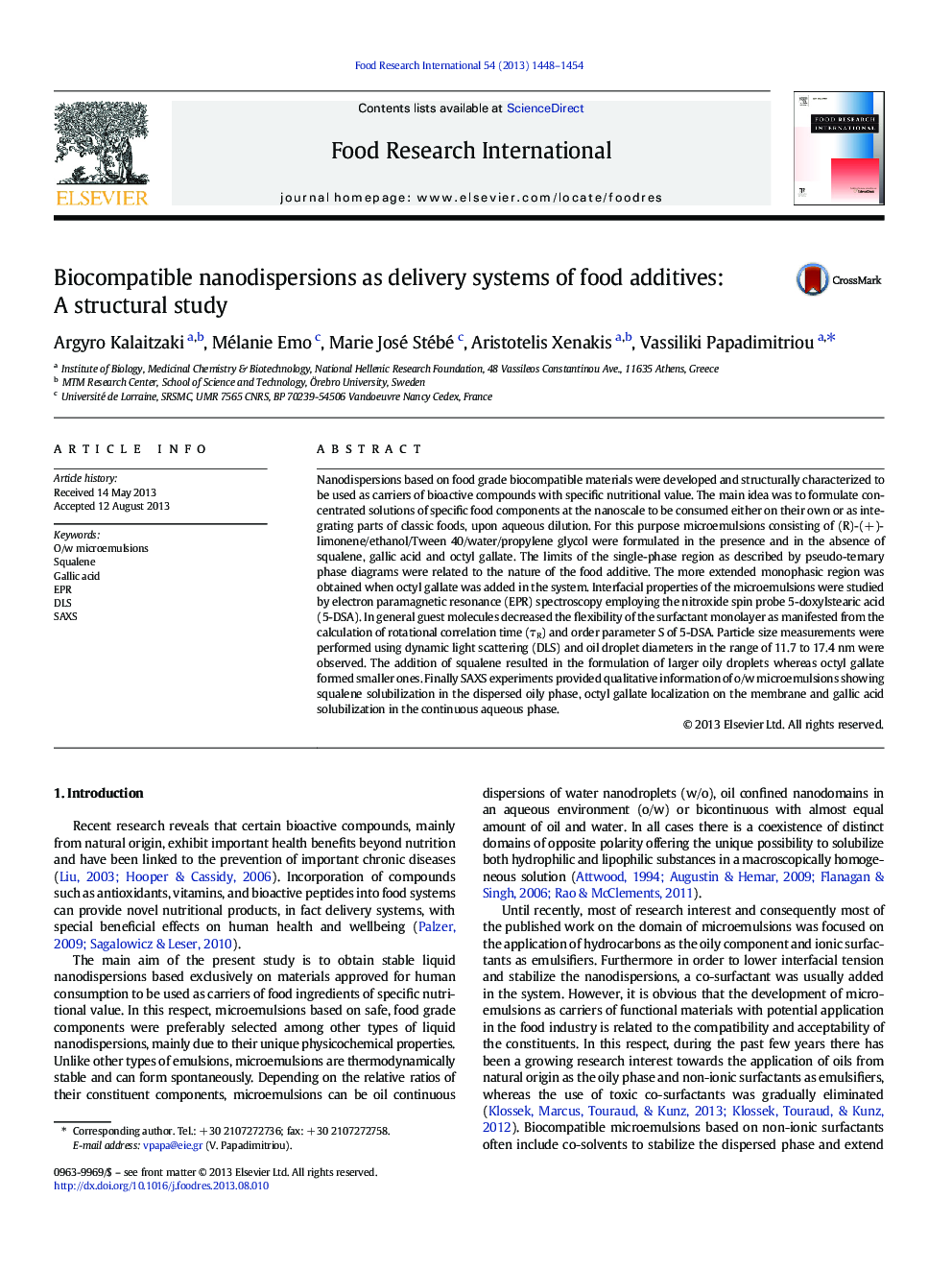| کد مقاله | کد نشریه | سال انتشار | مقاله انگلیسی | نسخه تمام متن |
|---|---|---|---|---|
| 6397322 | 1330675 | 2013 | 7 صفحه PDF | دانلود رایگان |
- Food grade nanodispersions were developed as delivery systems of nutrients.
- Complete phase diagrams were constructed in the presence of the food additives.
- Membrane flexibility was influenced by the solubilization of the nutrients.
- DLS and SAXS results reveal the nanostructuration of the studied delivery systems.
Nanodispersions based on food grade biocompatible materials were developed and structurally characterized to be used as carriers of bioactive compounds with specific nutritional value. The main idea was to formulate concentrated solutions of specific food components at the nanoscale to be consumed either on their own or as integrating parts of classic foods, upon aqueous dilution. For this purpose microemulsions consisting of (R)-(+)-limonene/ethanol/Tween 40/water/propylene glycol were formulated in the presence and in the absence of squalene, gallic acid and octyl gallate. The limits of the single-phase region as described by pseudo-ternary phase diagrams were related to the nature of the food additive. The more extended monophasic region was obtained when octyl gallate was added in the system. Interfacial properties of the microemulsions were studied by electron paramagnetic resonance (EPR) spectroscopy employing the nitroxide spin probe 5-doxylstearic acid (5-DSA). In general guest molecules decreased the flexibility of the surfactant monolayer as manifested from the calculation of rotational correlation time (ÏR) and order parameter S of 5-DSA. Particle size measurements were performed using dynamic light scattering (DLS) and oil droplet diameters in the range of 11.7 to 17.4Â nm were observed. The addition of squalene resulted in the formulation of larger oily droplets whereas octyl gallate formed smaller ones. Finally SAXS experiments provided qualitative information of o/w microemulsions showing squalene solubilization in the dispersed oily phase, octyl gallate localization on the membrane and gallic acid solubilization in the continuous aqueous phase.
Journal: Food Research International - Volume 54, Issue 2, December 2013, Pages 1448-1454
